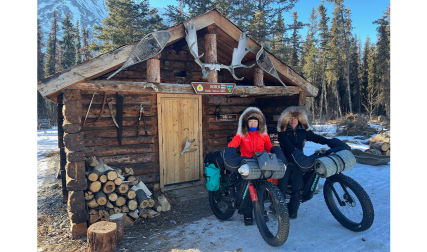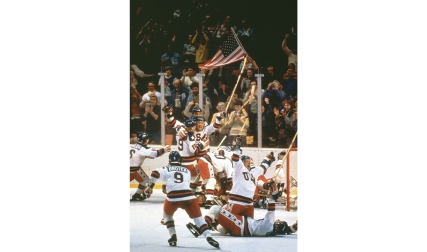Olympic Achievement
As usual I devoured my Jan/Feb DAM as soon as it arrived, and I have never been more proud to be a Dartmouth graduate. Thank you for a spectacular issue.
Steve Whiteley ’82
York, Pennsylvania
Your recent Winter Olympics issue [Jan/Feb] reminded me that when it comes to the limited audience for winter sports, brand Dartmouth—something I often consider as an advertising executive—has considerable equity. But the decline of the Dartmouth brand among those in the general population should be cause for concern.
I can’t help but wonder if the dearth of athletic titles in major sports such as football and basketball (and the corresponding lack of publicity) had anything to do with Dartmouth’s decline in U.S. News & World Report rankings.
I have watched schools in my area such as Penn and Villanova use athletic success to boost their brand equity and have noted that fielding national and conference sports champions in popular spectator sports has increased the brand reputation of several prominent academic institutions such as Northwestern, Princeton, Duke and Stanford. Meanwhile, Dartmouth is off the radar.
I applaud Dartmouth’s increased emphasis on intellectualism. And I am pleased that we continue to contribute athletes to the U.S. Winter Olympics teams. But as more and more Americans live in urban and suburban areas, attending a rural, northern school like Dartmouth may cause cultural and lifestyle concerns among 18-year-olds and their parents. If that hurdle is to be overcome, it will require a greater effort to improve Dartmouth’s brand awareness, loyalty and equity among those in our marketing target. This might best be achieved by greater success on the courts and playing fields, not just on the slopes.
W. Peter Cornish ’63
Berwyn, Pennsylvania
Alpine Fox
Great article on Al Merrill [“The Silver Fox,” Jan/Feb]! That’s the Al I remember all too well, especially forcing me up Moosilauke on those Sunday afternoon “hikes.” Thanks to Ed Williams ’64 for writing it and bringing back those memories.
Buster Welch ’63
Clandeboye, Manitoba
Gimme Shelter
I was pleased to read about the construction of the new Harris Cabin [“Rising from the Ruins,” Nov/Dec 2009] and am glad our class could finance its renewal. Your article brought back memories of a more direct involvement in the history of the Dartmouth Outing Club on Moose Mountain.
Back in 1965 Cabin & Trail built the Moose Mountain shelter to give Appalachian Trail hikers another overnight option after leaving Hanover. Like the Harris Cabin, this shelter was built solely by students. However, we didn’t really have the skills that the Harris crew showed. Ours was a simple structure: a three-sided lean-to of logs on a platform of tongue-and-groove flooring. As director of trails my job was to mark where the logs should be cut to make the walls. Unfortunately on one of those logs I forgot to add the two inches for the body of the tape measure. This mistake was uncovered only when we put the log in place. Since we had only the exact number of logs we needed, we had to leave the gap in place and try to fill it with a two-inch slice of log caulked into place.
For a while (blessedly short) the “McConnell hole” became a cautionary tale for new heelers. Thankfully, your story shows that today’s DOC builders are a lot more thorough and professional.
Michael J. McConnell ’66
Boston
I’m disappointed the DOC story [“100 years of the Dartmouth Outing Club,” Nov/Dec 2009] made no mention of the revitalization—rebirth, really—after World War II. Then director John Rand ’38 was a praiseworthy force and help to undergraduates who reopened the Ravine Camp buildings and many of the cabins and cleared many of the trails, among other accomplishments.
Jay Larmon ’47
Charlton, Massachusetts
Hot Times
“No Survivors” [Mar/Apr 2009]described the DOC response to a wilderness air/ground search. Thanks to Paul R. Meyer ’51 [“Letters,” July/Aug 2009], who called attention to the DOC response to forest fires in the dust-dry fall of 1947. Following training of a cadre by Ross McKenney, woodcraft advisor, the DOC led nearly 600 students who responded during a one-week period, logging some 12,000 hours while fighting fires on both sides of Mount Sunapee—one in Lebanon, New Hampshire, and one across the river.
The DOC worked with the fire department and high school in getting and refurbishing tools and providing student secretaries, with the White Church offering breakfast and preparing lunches for the many crews.
John Rand made the most of his connections with the Red Cross, the volunteer fire company and several state organizations. He obtained permission for two flyovers per day to map the progress of the battle.
In the end the rains came and ended the ordeal. The tools were retrieved and returned to their donors, and calm came over the campus. It was as if it never happened.
Bob Kendall ’49
Hopewell Junction, New York




